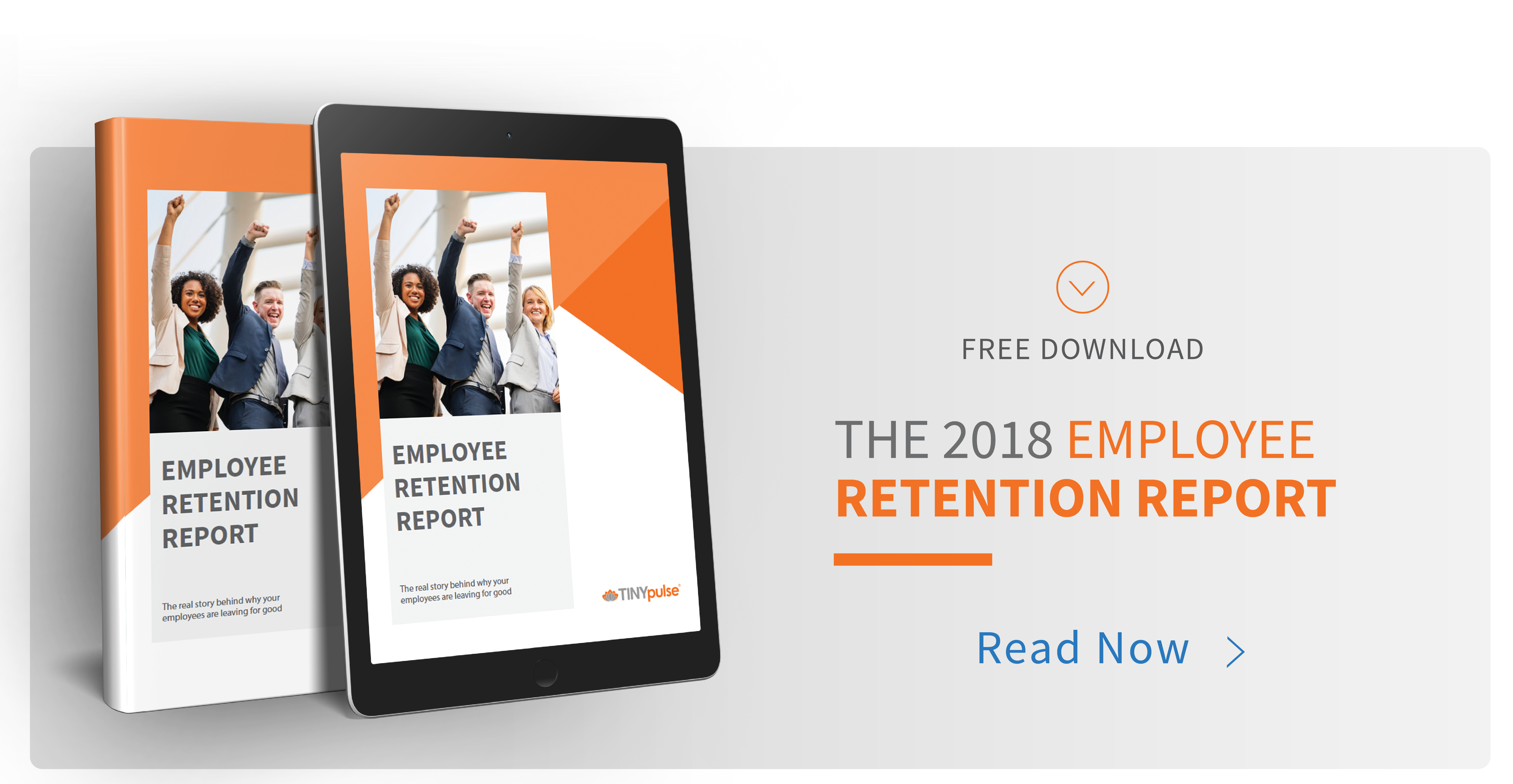How to Evaluate Collaborative Culture with an Employee Survey

The modern workforce has made working remotely more common than ever. The rise of remote work and technology means that there are less water cooler conversations and more days spent working alone.
However, a collaborative culture is still a vital aspect of a healthy and growing organization—even during these difficult times.
While leadership may appreciate the importance of a collaborative culture, they may fail to understand how to implement and encourage one. Many just hire the best talent the company can afford, set them up with collaborative technology and vague company values regarding collaboration, and hope for the best.
Creating a collaborative culture, though, means consistent, intentional steps to encourage teamwork. It takes a deep understanding of your current culture to know what steps need to be taken to promote collaboration in your office.
Here’s why you need to encourage a collaborative culture and how to evaluate your current culture with employee evaluations.
Why You Need a Collaborative Culture
Companies that encourage a collaborative culture experience a various number of benefits. A strong culture underlies most strong businesses and allows them to be as effective as possible.
Just a few of the advantages include:
1. Better Productivity
Businesses that work as a team can get much more done than those who work alone or in silos. Organizations that have high engagement report 22% higher productivity than those that don’t. Employees own the results of the organization, so they are more attentive and vigilant.
Companies that fail to collaborate, on the other hand, often find it difficult to accomplish their goals. In one survey, 86% of both employees and leaders cite a lack of collaboration for workplace failures.
2. Higher Retention Rates
The retention rate is critical to an organization’s overall profitability. Onboarding and training employees is an expense that many leaders would like to avoid.
Creating loyal employees, however, is as simple as creating a strong company culture that people actually enjoy working in.
In one survey, 33% of employees stated that the ability to collaborate makes them more loyal. This is why organizations that can communicate effectively are 50% more likely to have lower employee turnover.
READ MORE: 17 SURPRISING STATS ABOUT EMPLOYEE RETENTION YOU NEED TO KNOW

3. Attract Top Talent
Companies and corporations spend a lot of time and energy trying to attract the best talent. From free snacks to remote-optional work, getting the best is competitive. However, a collaborative culture is a critical advantage.
One survey found that 33% of millennials want a collaborative workspace. When it comes to attracting top talent, a healthy team-oriented company culture with clear communication and expectations is more persuasive than the latest break room gadget. When companies value relationships, they tend to be more friendly and enjoyable places to work. This is why 86% of potential hires wouldn’t apply to work at a company with a bad reputation with former employees.
4. Better Creativity and Problem-Solving
As positions become more nuanced and technical, teams run the danger of becoming siloed. This can be a serious problem when a new perspective is needed. They are lost in their own department and miss the benefits that can come with collaborating with folks on other teams.
Collaborative teams can help break through mental blocks when everyone pools their time, energy, and resources together to create better solutions.

Evaluate Your Team Culture with Employee Surveys (and Some Examples to Get You Started)
It’s impossible to know what exactly needs to be improved without understanding your current company culture. Before making a game plan or rewriting your company values to shape your culture, take some time to hear directly from your employees. See how they feel about the culture and get another perspective on what needs to be improved.
With that in mind, here are some of the ways you can create an evaluation that will help make a stronger team and questions to get you started.
Tips for Effective Evaluations
Not all employee evaluations are created equal. To get the most out of your surveys, keep these tips in mind:
- Start with an objective. Consider what you want to accomplish with your survey. This should help you select the questions that best aligns with your goals.
- Keep the questions short. Shorter questions are easier for your workers to understand. The more that your respondents comprehend what you’re asking them, the higher-caliber responses you’ll receive.
- Avoid leading questions. This is difficult for many leaders. Yet it’s essential for objectivity. For surveys to be truly useful, you need honest responses. If you use leading questions, employees will feel self-conscious and avoid stating how they actually feel, making the question pointless.
- Don’t ask questions you’re not ready to address. If you don’t have the budget for new technology, for example, avoid asking questions about what software your team would prefer. Your employees will hold certain expectations if they have to answer questions about a topic. They’ll be upset if you ask them questions you can’t deliver on.
- Don’t make questions mandatory. While you may be extremely curious, required questions will only produce vague or non-helpful responses from the bulk of your team. Encourage your employees to answer the questions that resonate with them the most.
- Ask specific questions. Avoid discussing too many topics in one sentence. It can be too confusing for your workers. Instead, address one particular issue with a targeted question at a time.
The best survey is the one that you can use to gain a new understanding of your company. By asking specific, voluntary, objective questions, you can get the most out of the surveys to improve your culture.

21 Employee Survey Questions about Collaborative Culture
Now that you have a basic understanding of collaborative culture and effective surveys, you may be wondering what to ask in your employee survey. To make your job easier, we’ve compiled 21 effective questions to help you get started.
Analogy
- If our organization had a theme song, what would it be? And more importantly, why did you choose this song?
- If our organization were a car, what kind of car would it be?
- If we were making a movie about our organization, which actor or actress should play our CEO and why?
- If you had to describe our company as an animal, what animal would it be and why?
- What is your favorite memory from working here so far? How did it make you feel?
- You just cracked open a fortune cookie about our company. What does the fortune say about our company’s future?
Analogy questions are a great way to start the survey because they are relatively harmless to answer. It gets employees comfortable and creative, and it stars off the survey with a bit of fun. You team is able to give their overall impression of the company without any pressure.
Employees might want to start out being overly critical of leadership or the company, even if they have strong reservations. Analogy questions encourage honesty because they don’t have to feel excessively critical.
Collaboration within the Workgroup
- Employees often go above and beyond the call of duty to ensure the organization’s well-being. (Yes/No)
- I feel well-connected to others in the organization. (Yes/No)
- How would you rate our organization’s team-building efforts? (1 being non-existent, 5 being “love them”)
These questions show not only your workers’ attitudes toward the group but also their perception of the teams’ general attitude as well. Connection is a critical piece of collaboration. The bond that they feel to other members of their team encourages them to reach out when they need help.
Lastly, determine whether your actions are getting the results you want. You may need to re-think your current team-building efforts if they’re not getting your team connected.
Company Agility
- How agile do you think we are as an organization compared to our competitors? (1 being much less agile, 5 being much more agile)
- How open to change are we as an organization? (1 being not at all, 5 being extremely open)
- How authentically do you feel we live our cultural values? (1 being not at all, 5 being very much so)
Your company’s ability to change and improve will affect the overall culture of your employees. Do your workers feel that there’s no point in coming up with innovative solutions? Do they feel as though you’re keeping up with competitors?
This can also give you a sense of how likely your employees are to leave your company for competitors.
Culture of Recognition
- Were you recognized the last time you went the extra mile at work? (Yes/No)
- What is one amazing thing one of your colleagues did to help you or our organization that no one or not many others know about?
- Who do you think is the “Most Valuable Player” of our organization?
Recognizing and valuing the accomplishments of others builds a positive and warm environment necessary for collaboration and teamwork. It also increases overall employee satisfaction.
Not only is recognition from leadership important, but coworkers as well. Understanding how well everyone acknowledges the hard work of their team members can help direct and improve your collaborative culture.
Strong Peer Support
- How would you rate your relationship with your coworkers? (1 being extremely poor, 5 being awesome)
- How connected do you feel to your coworkers? (1 being miles apart, 5 being very connected)
- I enjoy working with my coworkers. (Yes/No)
- How would you rate the level of respect colleagues give to each other at our workplace? (1 being little respect, 5 being a lot of respect)
Strong coworker relationships are vital to your collaborative culture. They can either raise or lower stress at work and promote respect. Remote work is particularly vulnerable to feelings of disconnection. But this can happen in the office as well. If peer support is low, it might be time to invest in team-building exercises.
Team Skills
- How would you rate your colleagues and team members? (1 being extremely poor, 5 being all-star)
- Do we have the right people on our team? (Yes/No)
Do your employees feel like their carrying the weight alone?
Getting a sense of how evenly employees feel the work is being accomplished can give you a sense of fairness and teamwork skills. The company hiring and onboarding process is an important step in deciding company collaboration and culture. As such, it’s vital to explore whether you have the right team members and whether they’re trained well enough.
Ready to Create a Strong Collaborative Company Culture?
Giving workers the time and space to honestly express their views and feelings towards your company is an important first step in creating a healthy, collaborative culture.
Organizations that invest in their culture enjoy many advantages—including better productivity and loyal employees.
With the right surveys in place, you can identify effective ways to encourage collaboration and find useful insights to grow your organization. It’s an easy way to make sure everyone wins—from upper management and stakeholders to your team and your customers.
Why not give it a whirl?
Share this
You May Also Like
These Related Stories







.png?width=534&height=632&name=blog%20ad%20(1).png)
